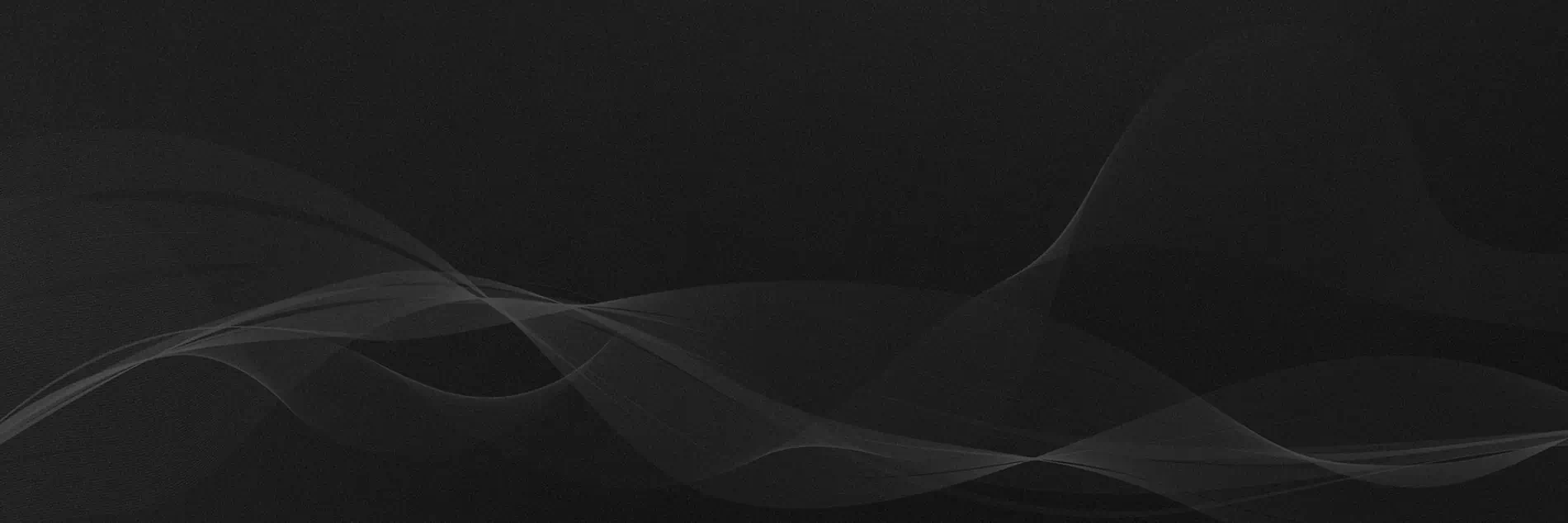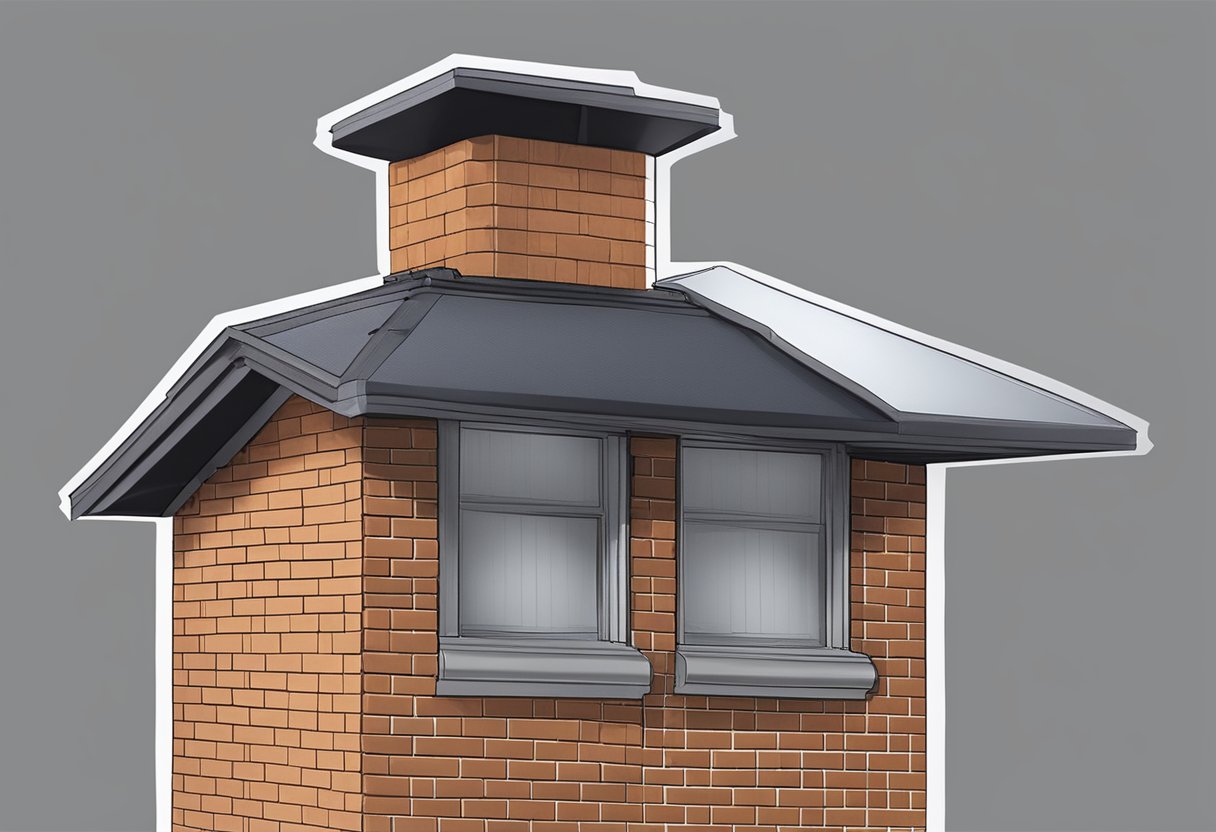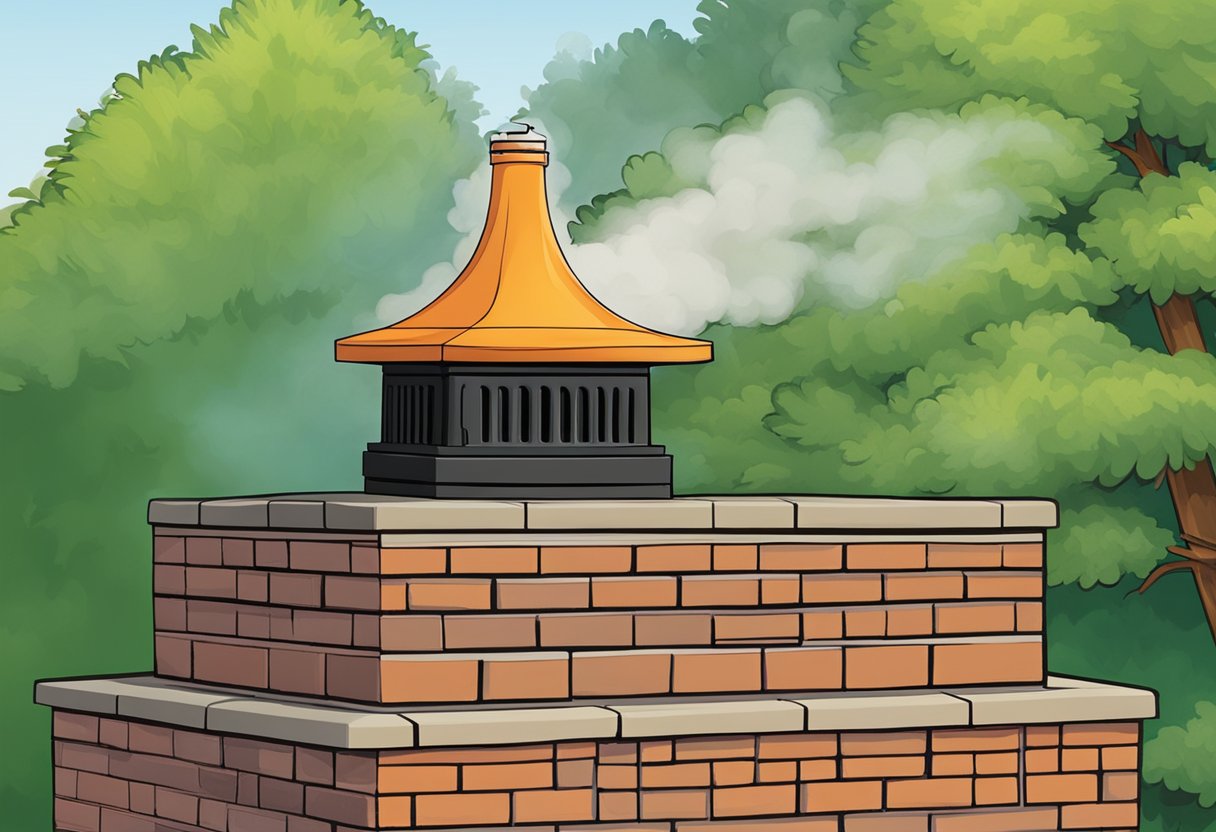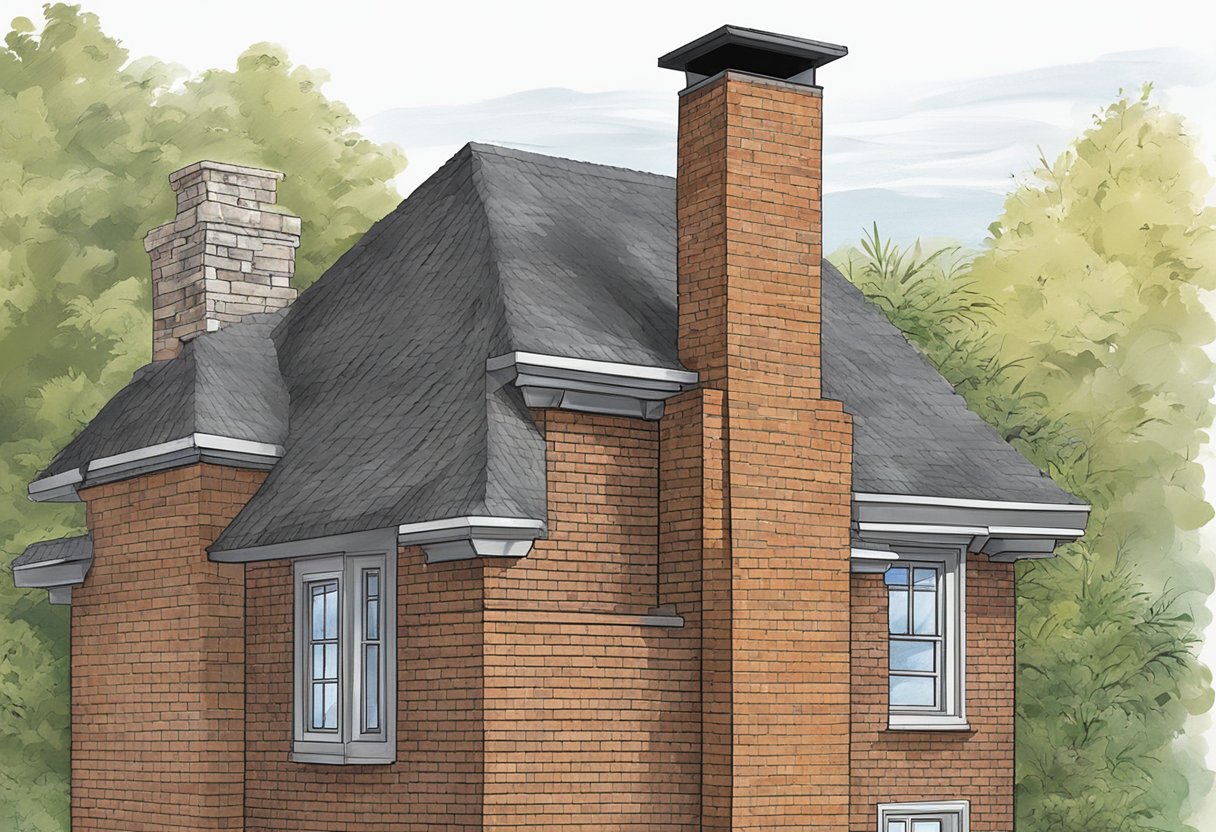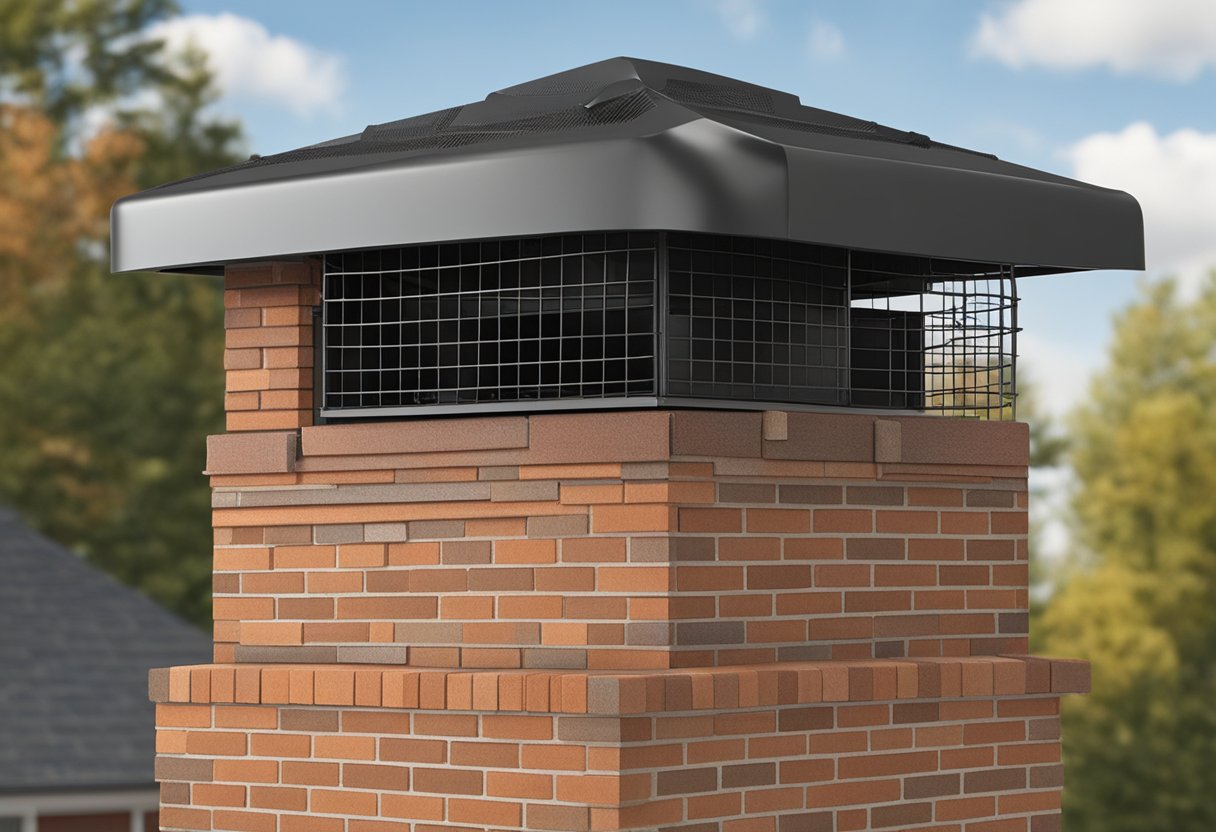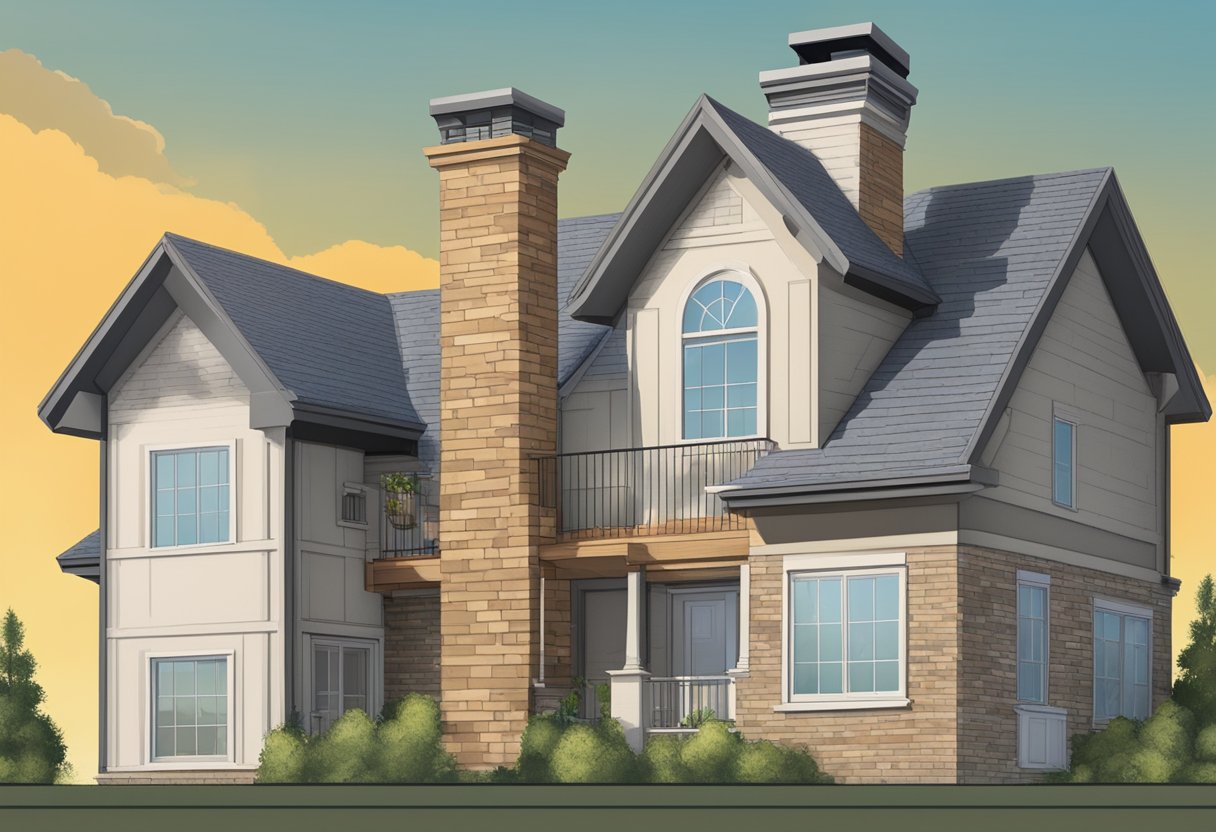Top 5 Reasons to Install a Chimney Cap: Enhance Safety and Efficiency
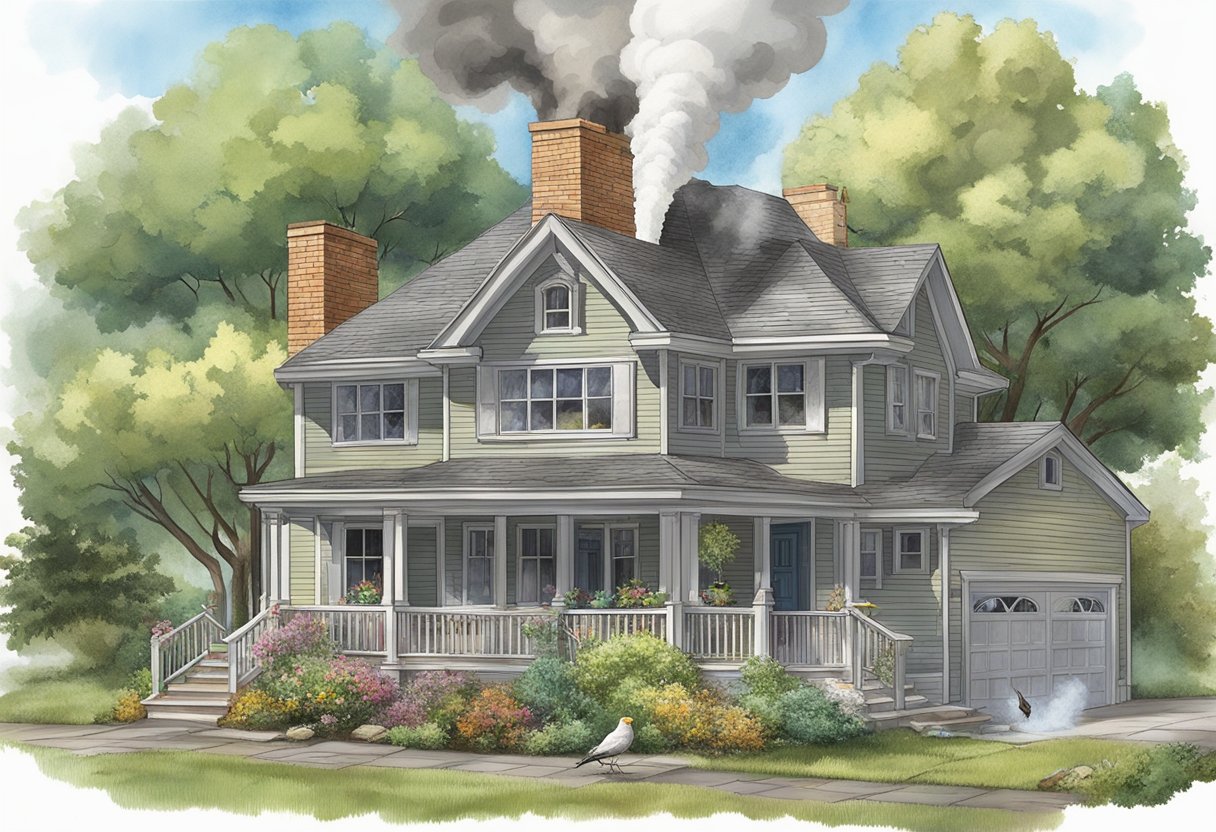
Introduction
Installing a chimney cap may seem like a small addition to your home, but it plays a crucial role in protecting your chimney and home from various hazards. A properly installed chimney cap can prevent water damage, block animals and debris, and improve the efficiency of your chimney. Made from durable materials like steel or copper mesh, chimney caps form a barrier between the elements and your home’s interior.
Beyond physical protection, chimney caps also enhance safety by reducing the risk of fire hazards. By preventing embers from escaping and debris from entering, a chimney cap helps maintain a safe and clean environment for your fireplace. Moreover, it keeps high winds from blowing smoke back into your home, making for a more pleasant and efficient fireplace experience.
Choosing the right chimney cap involves considering the type and size of your chimney, and the installation process typically requires professional inspection and custom fitting to ensure optimal performance. With these benefits in mind, let’s explore the top five reasons to install a chimney cap.
Key Takeaways
- Chimney caps prevent water damage and maintain structural integrity.
- A chimney cap enhances safety by preventing fire hazards.
- Installing a chimney cap improves chimney functionality and efficiency.
Preventing Water Damage and Maintaining Structural Integrity
Chimney caps play a crucial role in protecting chimneys from water damage and preserving the structural integrity of the chimney. By preventing moisture ingress and safeguarding the chimney’s crown and masonry, chimney caps ensure longevity and reduce the need for costly repairs.
Protecting Against Leaks and Moisture
Water damage is a significant issue for chimneys, especially when rain or snow infiltrates an uncovered flue. When water penetrates, it can lead to corrosion and weaken the flue lining over time. By installing a chimney cap, we can effectively block rainwater and prevent it from entering these vulnerable areas.
Moisture not only causes damage but can also lead to mold and mildew growth, posing health risks. A properly installed chimney cap with a storm collar ensures the diversion of rain and snow away from the flue opening, keeping the interior dry. This simple yet effective barrier helps in maintaining the overall health of our chimney system and prevents moisture accumulation.
Waterproofing your chimney is essential for keeping our homes safe and avoiding extensive water damage repairs, which can otherwise be quite costly.
Preserving the Chimney Crown and Masonry
The chimney crown, situated on top of the chimney, is particularly susceptible to water damage if not properly protected. When water infiltrates the crown, it can lead to cracking and spalling, which diminishes its structural integrity. Utilizing a chimney cap acts like an umbrella, shielding the crown from direct exposure to rain and snow.
Masonry, which includes bricks and mortar, also suffers from water damage if left unprotected. Over time, water can cause the mortar joints to deteriorate, leading to loose or missing bricks, which compromises the stability of the entire chimney. By installing a chimney cap, we safeguard the masonry, ensuring that rainwater is deflected and does not penetrate through the joints.
Routine maintenance and timely inspections further aid in preserving the structural integrity of our chimney. Regular checks allow us to identify any potential issues early on, making it easier to implement necessary repairs and prolong the life of our chimney system.
Implementing these protective measures helps us avoid costly repairs and maintain a functioning, safe chimney.
Enhancing Safety and Preventing Fire Hazards
Installing a chimney cap plays a vital role in enhancing safety and preventing fire hazards by controlling embers and reducing smoke issues. This section explores how chimney caps help keep embers contained and prevent downdrafts and smoke problems, ensuring a safer and more efficient fireplace experience.
Keeping Embers Contained
One of the primary safety benefits of installing a chimney cap is its ability to contain embers. It prevents embers from escaping the chimney and igniting a roof fire, which is a significant risk, especially during dry seasons. A well-installed chimney cap acts as a barrier to embers that might otherwise pose a substantial fire hazard to our homes.
Additionally, it also prevents embers from entering the chimney and causing potential indoor fire hazards. This dual functionality ensures that both the inside and outside of our home are protected from unintended fires originating from our fireplaces. The reduced risk of fire is a key safety enhancement offered by chimney caps, making them an indispensable addition to our chimneys.
Preventing Downdrafts and Smoke Issues
Chimney caps are also essential in preventing downdrafts, which can turn a cozy fireplace experience into an unpleasant smoke-filled ordeal. These downdrafts occur when wind blows down the chimney, pushing smoke and harmful gases back into the home. This not only creates a mess but also poses serious health risks due to the inhalation of smoke and creosote.
By stopping winds from entering the chimney, chimney caps ensure that smoke is properly directed up and out of our homes. This helps maintain a clean and safe indoor environment free from the dangers of smoke inhalation. Additionally, by preventing downdrafts, chimney caps contribute to efficient fire burning and improved air quality inside our homes, making our fireplaces more enjoyable and safe to use.
Improving Chimney Functionality and Efficiency
Installing a chimney cap isn’t just about protection; it’s also essential for enhancing the overall performance of our chimney. By ensuring optimized draft and maintaining heating efficiency, we can enjoy a safer and more efficient home heating system.
Optimizing Draft and Ventilation
A chimney cap plays a crucial role in regulating draft and ventilation. Without a cap, drafts can become inconsistent, leading to improper smoke expulsion. This can result in polluted indoor air and even increase the risk of fire hazards.
By installing a chimney cap, we ensure that oxygen circulates freely up the flue, directing smoke outside efficiently. This aids in preventing downdrafts that can bring smoke and toxic gases back into our living space. Effective draft regulation not only keeps the chimney clean but also ensures that our fireplace operates safely and efficiently.
Maintaining Heating Efficiency
Keeping our chimney in top shape directly impacts our home’s heating efficiency. A chimney cap helps to maintain this efficiency by preventing external elements like rain, snow, and debris from entering the chimney. When such elements accumulate inside, it can obstruct the flue, reducing the chimney’s ability to expel smoke and retain heat.
Additionally, a cap keeps animals from nesting in our chimney, which can cause blockages and affect heating performance. By ensuring a clear flue, a chimney cap helps maximize the efficiency of our heating system, ultimately reducing energy bills. Proper draft management also means our fireplace burns fuel more efficiently, providing better heat distribution throughout our home. For a detailed guide on how a chimney cap enhances efficiency, visit Chimney Cap Buying Guide.
Animal and Debris Prevention
Installing a chimney cap is crucial for preventing animals and debris from entering your chimney, potentially causing blockages, fires, and other serious problems.
Keeping Animals and Critters Out
One of the primary benefits of a chimney cap is keeping animals out. Birds, squirrels, raccoons, and other wildlife often seek standard in chimneys.
We typically use caps with a mesh or screen to cover the chimney opening. This design prevents animals from gaining entry while allowing smoke to escape.
By installing a chimney cap, we can effectively deter these critters, thus avoiding potential nests or blockages. This measure is essential during breeding seasons when animals are actively searching for nesting sites.
Blocking Leaves and Debris
Another significant advantage of a chimney cap is its ability to block leaves and debris. Falling leaves and twigs can easily enter an uncapped chimney, leading to blockages and increased fire hazards.
A chimney cap with a sturdy mesh screen helps prevent accumulation of such debris. This feature not only maintains proper airflow but also makes regular chimney cleaning more manageable.
Additionally, preventing debris from entering the chimney reduces the risk of moisture buildup. When leaves and twigs get wet, they can cause damp and moldy conditions inside the chimney. Using a chimney cap here can address these issues effectively, contributing to the overall safety and efficiency of the chimney.
Considerations for Chimney Cap Selection and Installation
When selecting a chimney cap, it’s crucial to consider both the materials and styles available, as well as the steps involved in the installation process. We’ll cover materials like copper and galvanized steel and the different chimney cap styles for single-flue and multi-flue chimneys. Understanding the installation process helps decide whether to opt for DIY or professional installation.
Choosing the Right Materials and Styles
Choosing the correct material for your chimney cap is important for both durability and aesthetics. Common materials include stainless steel, copper, aluminum, and galvanized steel. Stainless steel is known for its durability and resistance to rust, making it a popular choice. Copper offers a visually appealing finish that ages well, developing a natural patina over time. Aluminum is lightweight and resistant to corrosion but may not be as durable as steel. Galvanized steel provides a cost-effective option with decent longevity.
Next, consider the style of the chimney cap. Top-mount caps cover the entire chimney crown and are suitable for chimneys with multiple flues. Single-flue chimney caps are designed for individual flues. Additionally, it’s important to consider the mesh size on the cap, which should be fine enough to keep out debris and animals but allow proper ventilation.
Understanding the Installation Process
Accurate measurements are essential for a proper fit. Measure the dimensions of your chimney’s flue before purchasing a cap. For installation, you can choose between DIY and professional chimney cap installation. A DIY approach requires basic tools and skills, such as unscrewing wing nuts and securing the cap with brackets. Be sure to clean the chimney crown thoroughly before installation to ensure a tight fit.
For those uncomfortable with heights or lacking experience, hiring licensed professionals might be the better option. Experienced technicians can ensure a proper and safe installation, often completing the job more quickly and efficiently. While the cost of professional installation may be higher, the peace of mind and correct fitting could be worth the investment.
Consider whether your chimney cap will be used with single-flue or multi-flue chimneys, as this impacts both the measurements and installation method. In some cases, custom fabrication may be necessary to ensure a perfect match, especially for non-standard chimney sizes or shapes.
Frequently Asked Questions
We often get questions about the importance and functionality of chimney caps. Here, we address some of the most common inquiries to help you understand why a chimney cap is an essential addition to your home.
What are the benefits of having a chimney cap?
A chimney cap offers numerous advantages, including protection against weather elements, improved safety, and enhanced efficiency. It helps to prevent downdrafts and keeps debris and animals out of the chimney.
Can a chimney cap prevent water damage to my chimney?
A properly installed chimney cap plays a crucial role in preventing water damage. It keeps rain and snow from entering the chimney, thereby protecting the flue lining and mortar from deterioration caused by moisture.
How does a chimney cap improve fire safety in the home?
A chimney cap improves fire safety by preventing embers and sparks from escaping the chimney. This reduces the risk of fire hazards, including roof or property fires. Additionally, it helps in keeping flammable debris out of the chimney.
What role does a chimney cap play in keeping out wildlife and debris?
A chimney cap is an effective barrier against wildlife such as birds, squirrels, and raccoons that might try to enter the chimney. It also prevents leaves, sticks, and other debris from clogging the flue, which can lead to dangerous blockages.
How can a chimney cap contribute to better draft and efficiency in a chimney?
By preventing downdrafts, a chimney cap can significantly improve the draft and overall efficiency of the chimney. This ensures that smoke and gases exit your home properly, enhancing the performance of your fireplace or stove.
Is it necessary to install a chimney cap for all types of chimneys?
While chimney caps are highly recommended for all types of chimneys, specific installation needs may vary. It’s best to consult a professional to determine the most suitable cap design and size for your particular chimney setup.

 We Ship Anywhere USA & Canada
We Ship Anywhere USA & Canada

